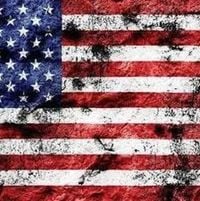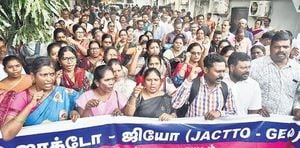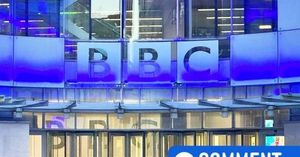On the morning of August 14, 2025, travelers arriving at Washington, D.C.'s Union Station were greeted not just by the usual bustle of commuters and tourists, but by the watchful presence of National Guard personnel. Their deployment was the latest, and perhaps most visible, sign of the escalating federal intervention in the nation’s capital—a move that has sparked fierce debate about crime, politics, and the future of American cities.
Republican leaders have ramped up their rhetoric about urban crime, casting cities like Washington, D.C. and New York as lawless wastelands. Senator Markwayne Mullin (R-OK) recently summed up this sentiment on Fox News, declaring, “I drive around in Washington, D.C., in my Jeep and, yes, I do drive myself. And I don’t buckle up. And the reason why I don’t buckle up, and people can say whatever they want to, they can raise their eyebrows at me, again, is because of carjacking.” Mullin’s words, though dramatic, echo a familiar refrain from conservative figures who have painted American cities as dangerous and out of control.
But do these claims hold up? According to Robert Reich, writing on August 15, 2025, “Washington, D.C.'s crime rate is at its lowest in 30 years,” directly contradicting the narrative of rampant lawlessness. Reich argues that Republicans have actually undermined public safety by “literally defund[ing] the police in D.C. by stealing more than a billion dollars from the city.” He further accuses former President Donald Trump of “dismantling the FBI and putting corrupt, unqualified jerks at the top of our federal law enforcement.”
Despite such assertions, the Republican project in D.C. has moved forward with remarkable speed. Trump has seized control of the D.C. police department, sent FBI agents to patrol peaceful city parks, and authorized Defense Secretary Pete Hegseth to deploy National Guard troops. These moves have been justified by Trump and his allies as necessary responses to an alleged surge in urban crime—a claim that has been met with skepticism by local residents and independent observers alike.
Senator Rick Scott (R-FL) has added to the chorus, warning visitors to D.C. that “you need to be careful where you stay, you need to be careful where you walk, you shouldn’t be out after dark.” Transportation Secretary Sean Duffy has similarly sounded alarms about crime on the New York subway, despite official statistics showing otherwise. Former President Trump, for his part, has dismissed police data showing falling crime rates, insisting, “The fact is, it’s worse than it has ever been.”
Yet the reality on the ground tells a more nuanced story. While D.C. did experience a notable spike in carjackings during 2022 and 2023, the trend has since reversed, with incidents now returning to pre-pandemic levels. For most residents—especially white men like Mullin, Duffy, Scott, and Trump—the risk of violent crime remains low. In fact, the greatest danger for this demographic is not crime, but vehicle traffic: 110 people died in traffic accidents in the D.C. area in 2024, a hazard made deadlier by not wearing a seatbelt.
Other cities are seeing similar improvements. Baltimore, long maligned for its crime rate, is now experiencing the lowest homicide rate since the 1970s, a turnaround credited to the efforts of Mayor Brandon Scott. These success stories stand in stark contrast to the apocalyptic visions painted by some national politicians.
So why the disconnect? Reich contends that the Republican focus on urban crime is less about public safety and more about politics. He urges Democrats to fight back with facts: “Have a truth squad that responds immediately with the facts and cites sources. When Trump claims that Washington, D.C., is rife with crime, for example, get the truth out: that its crime rate is actually the lowest it’s been in 30 years.” Reich also notes that red states, on average, have higher murder rates than blue states—a point rarely acknowledged in partisan debates.
Underlying the current standoff is a deeper cultural divide. American cities, especially those in blue states, have become symbols of diversity, cosmopolitanism, and progressive values—everything that many conservatives claim to fear or despise. Reich argues that the Republican project is about more than just policing: it’s about “the violent subjugation of liberal cities.” He points to Trump’s willingness to use federal power against cities as an experiment that could be expanded elsewhere. Representative James Comer (R-KY) made this explicit on Newsmax, saying, “We’re gonna support doing this in other cities if it works out in Washington, D.C. I think this is an experiment that’s probably needed in a lot of the Democrat-run cities in America.”
For many progressives, the response from Democratic leaders has been frustratingly muted. Reich laments that “individually, some have shown real heroism. But as a party they are disunited, ineffective, seemingly afraid of their shadows.” He lays out a nine-point plan for Democrats, calling for bold action: telling the truth about crime rates, planning policies for the environment and social safety nets, laying out a vision for the future, pursuing electoral reforms, mounting independent investigations, joining the International Criminal Court, creating safe havens for whistleblowers, targeting corporate monopolies, and developing a strategy to retake Congress in 2026.
Reich’s call to action is rooted in a belief that the stakes are not just about partisan advantage, but about the survival of American democracy. He warns that unless Democrats begin to take concrete steps, “the nation’s peril will only deepen.” Among his most urgent recommendations is the need to “combat misinformation blaming immigrants and other groups for economic problems, emphasizing corporate monopolies and political power concentration.” He also urges the party to focus on recruiting candidates who understand the economic stresses faced by ordinary Americans, rather than relying on “corporate Democrats or Wall Street Democrats.”
The political battle over America’s cities is not just a matter of rhetoric or policy—it’s a clash over competing visions of what the country should be. On one side are those who see cities as dangerous and in need of federal intervention; on the other are those who view them as vibrant, diverse, and essential to the nation’s fabric. The outcome of this struggle will shape not only the fate of Washington, D.C., but the trajectory of American democracy itself.
As National Guard troops continue their patrols in the capital, and as politicians on both sides sharpen their arguments, one thing is clear: the debate over urban America is far from settled. The coming months will test not only the resolve of city residents and local leaders, but the ability of the nation’s political system to respond to fear, misinformation, and the urgent need for truth.




